Azawakh
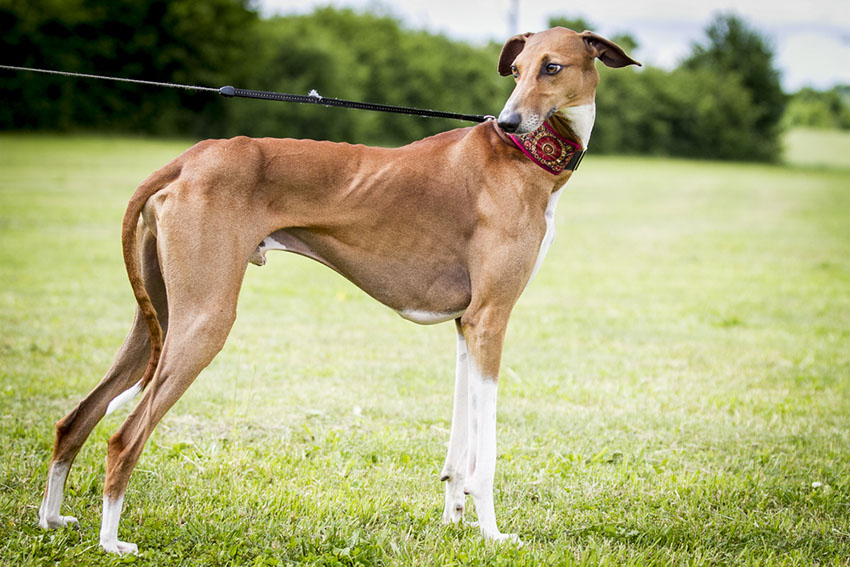
The Azawakh originates from the Saleh area south of Sahara, where it’s still used by nomadic people to guard herds of sheep and goats from predators and enemies. It has also previously been used to hunt gazelle and hare across the arid desert lands.
The Azawakh is a very lean and large sight dog with long legs, and the muscles and bones are clearly visible through the thin skin.
It’s a loyal family dog that forms strong connections to their owners, and must get used to being by themselves early on to minimise the risk of separation anxiety. The breed needs to run freely, so make sure they can do so in a safe area. The hunting instinct can be strong, but they are intelligent and relatively easy to train, so it’s possible to take them from walks off the lead.
Catahoula Leopard Dog

The Catahoula Leopard Dog was originally bred in the state of Louisiana, and was initially used to hunt large game, and later feral pigs in the swaps. It’s still used as a working dog with several purposes, including herding, as it’s known for its agility, intelligence and strength.
It’s a medium sized dog with a short coat that is normally recognised for its many varied coats, eye colours and patterns. Catahoula Leopard Dogs can make great pets as long as they get enough stimulation. It’s also important to train and socialise them early, as they run the risk of getting territorial and overly protective otherwise.
Caucasian Ovcharka / Caucasian Shepherd Dog
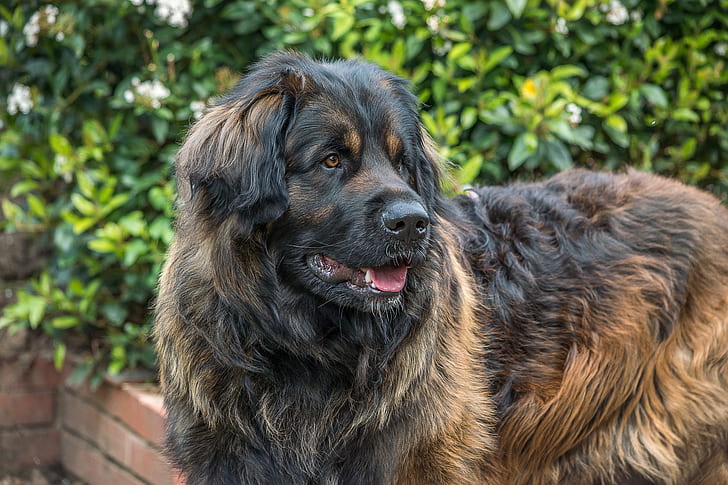
As the name suggests, this giant dog breed originates from the Caucasus, an area between the Black Sea and Caspian Sea, where it was first used to herd livestock.
It’s an extremely independent, fearless and intelligent dog that can get very territorial and protective, so requires an experienced owner that can give them consistent handling and accurate socialisation throughout their lives. This will counteract potential aggressive behaviour, mainly towards other dogs.
Caucasian Ovcharkas require plenty of both mental and physical stimulation. When not working, the dog will enjoy sleeping the day away, so it’s important to prevent the high risk of obesity by going to plenty of walks and playing fun retrieving games.
Schipperke
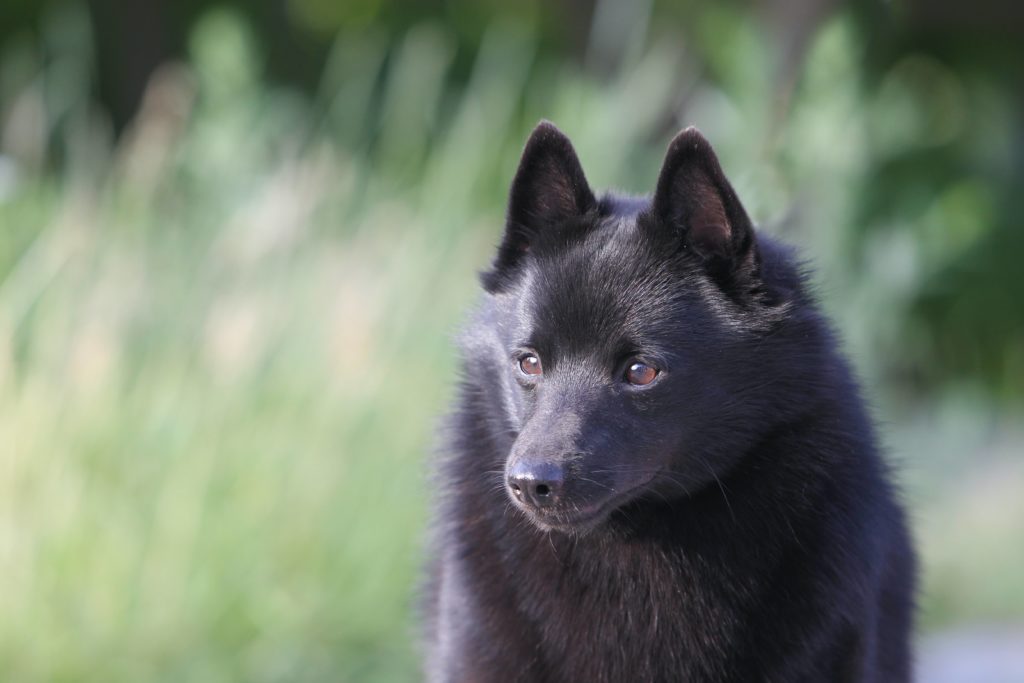
Schipperke means small herding dog in Flemish, which is where the dog breed was first seen. It’s also got a history as a guard dog and ratter on the Dutch and Belgian canal boats. Today the breed is mainly kept as a pet, but it still makes a great guard dog, as you’ll struggle to find a more loyal companion.
As the Schipperke was bred to work, the breed will need to be kept stimulated and active to prevent destructive behaviour, but it’s relatively easy as they will be happy with most things as long as they are with their owner!
Berger Picard
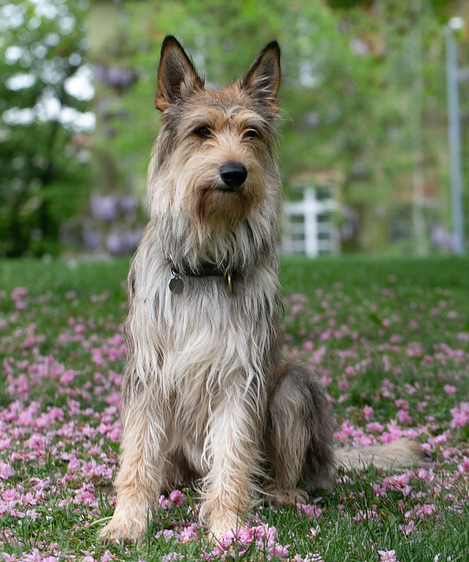
The Berger Picard is easily recognisable thanks to the large pointy ears, the wavy brindle coat and the hooked tail. The name comes from the breed’s home region of Picardy in France, and it’s one of the oldest French herding breeds.
They are extremely active dogs that will be the perfect companion for owners who enjoy long runs and hikes, sports and mental stimulation in the form of obedience training. If you can only give your dog a short walk around the block every day, the Berger Picard is not for you!
The breed was recognised 1925, but had almost disappeared after the world wars. Keen enthusiasts recreated a strong breeding stock, but it’s still rare.
Pumi
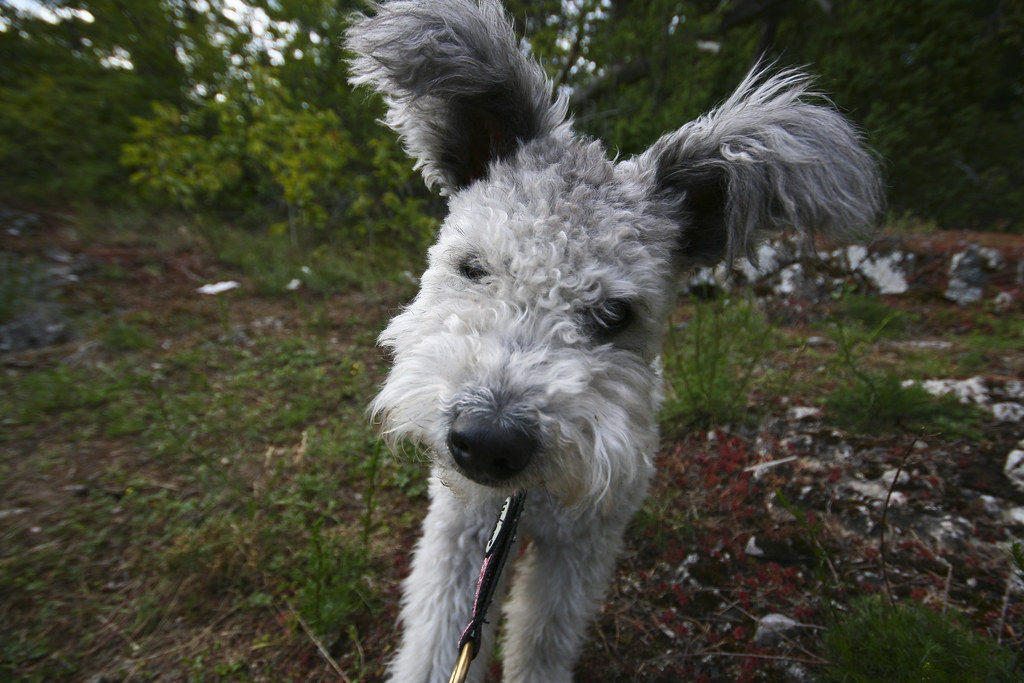
The Pumi is a result of selective breeding of the other famous Hungarian sheep dog, the Puli, and French and German herding dogs and terriers. This has given the breeds it’s lively, intelligent and active temperament.
Pumis love working, but also to relax with their family. It’s a generally happy breed that will make a great pet for an active family that can keep the dog busy during the day and shower it with love and snuggles on the sofa in the evening.
The curly coat, normally grey or black, requires a bit of work, but doesn’t shed.
This entry was posted in Dogs on May 6th, 2020 by linnearask
Are you thinking you might want to keep chickens and rabbits together? These two outdoor-loving pets actually share several similarities, and can live in harmony as long as their individual needs are met. Chickens and rabbits have shared barnyards across the world for generations, so with a little preparation and planning, you’ll be able to keep both in your backyard. Discover how to keep these two species together, and what to expect along the way.

Chickens and rabbits together
Both chickens and rabbits are very social animals that enjoy spending time with others of their own kind, their owners, and even each other. Chickens and rabbits require about the same amount of space, and their ideal temperatures and the amount of care they require is similar. One large area with dedicated spaces for their own food and lodging is ideal for keeping fur and feathers together.
But there are a few things to think about if you’re considering keeping rabbits and chickens together – just putting them together in a chicken run or rabbit run without dedicated areas would be a mistake. We’ll share our top tips for how to help your flock and fluffle share a harmonious existence.
Introduce them early
You are more likely to succeed if you start introducing the animals to each other when they are young, so that they are raised together. But no matter which age they are, you’ll need to start by keeping them on different sides of a fence or a run so that they can get used to each other. Omlet’s partitions for the Outdoor Pet Run are perfect to create this separation. When they’re ready to spend time face-to-face, keep them in a very large enclosure, so that no one feels threatened by the other species. Make the enclosure gradually smaller, until they are all in the run where you are planning to keep them permanently.
Watch for signs of trouble
Your chickens might try to peck the rabbits while they are getting used to their fast movements. This doesn’t hurt a fully grown rabbit, and should pass after a few days. Never put a very young rabbit in with a flock of adult hens, as they are much more vulnerable. If your rabbit hasn’t been raised with the chickens from chicks, make sure your bunny is at least 4 or 5 months old before making introductions. If you notice tufts of fur being pulled out, or distress calls coming from your rabbit, remove them right away.
Different dwellings
Chickens and rabbits have very different sleeping habits. Chickens will roost overnight, while rabbits will seek shelter at ground level. Having their own sleeping quarters will also prevent chickens from depositing their droppings on unsuspecting rabbits during the night. Your chickens should have their own hen house, and bunnies should have a rabbit hutch to retire to at the end of the day, or when they’re overstimulated.
Dietary requirements
While chickens and rabbits can share fresh produce and certain treats, the bulk of their diet is very different. Chickens require layer feed, while rabbits need pellets that are lower in protein that are composed primarily of timothy hay. They’ll happily sample each other’s feed, but this can cause digestive upset. To prevent this, make sure your chicken feeders are out of reach of your rabbits, and that your rabbits are fed inside of their hutch, or in a separate area that they can access via Zippi Rabbit Tunnels, which are not accessible by most chickens.
Rabbits are tidy
Rabbits are well known for their cleanliness. They strive to eliminate in the same place each time, and they will meticulously clean themselves with their tongues and paws. Chickens on the other hand don’t maintain a reputation of tidiness. They’ll drop their eliminations wherever they are at the moment – which will not impress your rabbits. Thankfully, Omlet’s chicken coops, chicken runs, and rabbit hutches are all easy to clean, so you can keep their shared space tidy with minimal time and effort spent.
Make sure there’s room
Having two species in one place might be space efficient on the whole, but make sure the run is big enough and equipped with toys and hiding places to entertain and calm your pets. The Caddi Treat Holder is a perfect food toy for both rabbits and chickens to share fresh produce, and Zippi Play Tunnels are a perfect small den for a tired bunny.
Safety in numbers
Since chickens are flock animals, and rabbits live in groups, they need the company of the same species. Always keep at least two rabbits together – even if they’re with your chickens. Rabbits groom each other, sleep together, and speak the same language, so it’s important to have a pair of bunnies. Neutered males, spayed females, or one of each are usually the most successful pairings. Male rabbits kept together should always be neutered to avoid territorial displays, including those made toward your chickens. Similarly, roosters in a flock of chickens will defend the hens, which may mean displays of aggression toward rabbits. When keeping chickens and rabbits together, avoid having a rooster in the mix.
Omlet and your mixed flock
We’ve designed chicken coops and rabbit hutches to be not just practical and functional, but enjoyable. By combining your chickens and rabbits together in a shared space, you’ll be able to enjoy the company of each of them without sacrificing time with the other. In a large outdoor pet run, you can create the ultimate spot to spend time with your chickens and rabbits, and benefit from the interaction that different species have to offer each other – humans included.
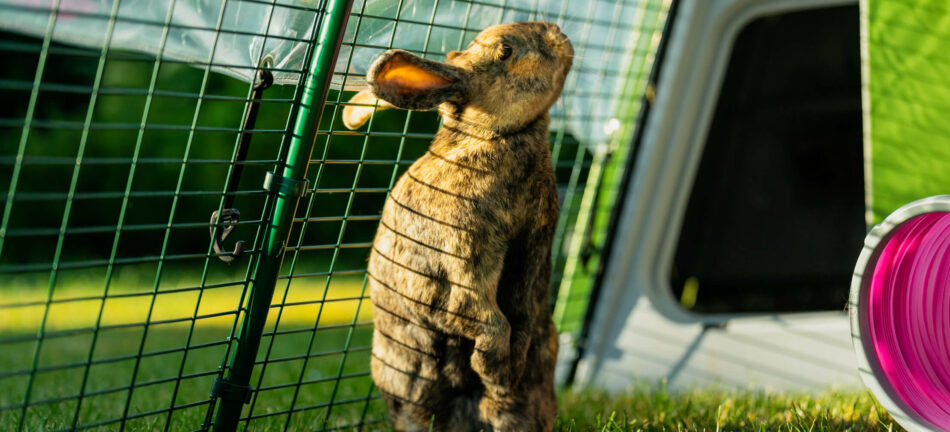

This entry was posted in Chickens on May 6th, 2020 by linnearask








